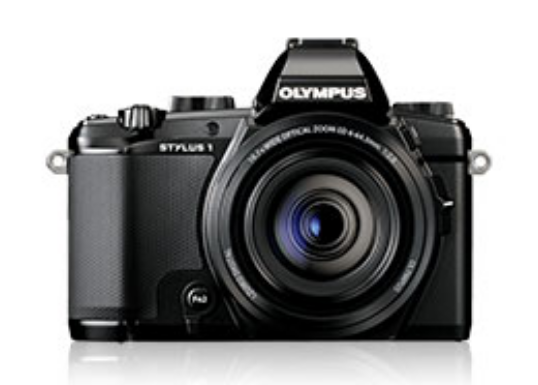introduction
Olympus like other camera manufacturers are focusing on high-end models to differentiate them from more capable camera phones.
Looking at the front, top and rear of this new compact camera, it looks like the firm's popular OM-D E-M5 mirrorless model.
It does not have an interchangeable lens, but it does have a 6-64 mm (28-300 mm equivalent) f2.8 continuous aperture zoom lens, which is longer than most rivals in the range, while still being high-speed when slowed down. The lens is considered. On the short end.
Olympus Stylus 1 sensor
Like other models aimed at enthusiasts, it has a 12-Mpix 1 / 1.7 "type (5.6 x 7.4 mm) BSI CMOS sensor. However the 1” type sensor found on the Sony enthusiast compact and Nikon 1 mirrorless models is not as large. , But 1 / 1.7 ”is most commonly found on digital compacts.
Along with the unusual inclusion of a high-resolution 1.4m-dot EVF, the Stylus 1 can touch a 3-inch tilt and sensitive rear screen, as well as Wi-Fi built from an image and a Wi-Fi to share with.
Fi smartphone. It also has a hybrid control ring borrowed from the Stylus XZ model and Hot-shoe Plus, which can benefit from the huge zoom range when capturing full-HD video. It is now available for $ 699
Olympus Stylus 1 sensor Main Specifications:
12-mpix 1 / 1.7 I BSI CMOS Sensor
10.7x i.Zuiko Optical Zoom Lens (28-300mm equiv)
F2.8 constant aperture
Super Macro Mode 2 2 with Minimum Focus
1.4M-dot high-res EVF with proximity sensor
3.0 screen 1.04M-dot tilt and touchscreen LCD
Full 1080p HD Video
Built-in Wi-Fi connectivity
Hybrid control ring and built-in lens cover
Olympus Stylus 1 sensor Built-in flash and hot shoes
Stylus 1 earned a DxOMark a score of 51 points, ranking 16th against the 4: 3 type and 203rd smaller sensors in our overall sensor rankings.
Which incorporates it with older Fujifilm FinePix X10-like models, but also newer models such as the Nikon 1 AW1 and the Panasonic Lumix DMC-LF1.
Aided by the BSI architecture, it has good color depth at 20.7 bits and a dynamic range of 11.6 eaves is impressive at base ISO.
Low-end capabilities are relatively promising for sensors of this size and pixel pitch, but a score of 179 ISO is on the low side and is a long way behind the large surface area 1 "type sensor found in Sony high-end compacts , Such as the Cyber-shot DSC-RX100 II.
Pitch against rival cooling offerings that we adopt the same or related Sony sensors as in the case of the Nikon Coolpix P7800 and a similar size, presumably the Canon Fabed, CMOS sensor stylus in the G16 gets similar results but similar results does not do.
In real-world terms, you will find it difficult to tell them differently. In the lab though Stylus 1 has a slightly lower color sensitivity than Stop 1's Nikon, due to a slightly higher noise floor.
Dynamic range is similar, but slightly higher noise means lower-light capabilities lagging behind the Canon model's -1/3 stop.
The stylus 1 has a marginally higher level in the lab compared with the Canon, especially though the difference between them.
In the use of 'real world' will not be noticeable. Dynamic range is similar to Nikon, although Canon has little advantage, and not only at base ISO but also at high sensitivity.
Needless to say the results are close. The Sony Cyber-shot DSC-RX100 II and Nikon 1 V2 mirrorless cameras, which both use 1 "type sensors with the 2.7x surface area of the sensor in the Stylus 1, make interesting comparisons. Sony is quite remarkable when compared with Nikon And even more.
Not only that, Sony has an extra 4-Mpix on Nikon. It has a higher color sensitivity and a significantly wider DR.
Nikon struggles to overtake the Stylus 1 beyond the base ISO, though It has better low light capabilities with only + 1-stop improvement in sensitivity. Sony is slightly better than this.
The Sony Cyber-shot DSC-RX100 II and Nikon 1 V2 mirrorless cameras that both use 1 "type sensors with the 2.7x surface area of the sensor in the Stylus 1 make interesting comparisons.
Sony is quite remarkable when compared with Nikon And even more. Not only that, Sony has an extra 4-Mpix on Nikon.
It has a higher color sensitivity and a significantly wider DR. Nikon struggles to overtake the stylus 1 beyond the base ISO,
though It has better low-light capabilities with only + 1-stop improvement in sensitivity. Sony is slightly better than this.
The Stylus 1 has excellent DR at base ISO compared to larger sensors in the Nikon 1 V2, but does not compete with the RX100 II And both sensors outperform Olympus at high ISOs.
The Sony RX100 II and Nikon 1 V2 sensors both have better noise response than the Stylus 1, but this is very surprising.
The sensor in the Olympus Stylus 1 compares compatibility with other models using similar sensors, most notably the current Canon PowerShot G16 and the Nikon Coolpix P7800. Both of those models are cheaper by around $ 150, but Olympus has a more promising zoom lens as well as benefits from a built-in EVF like the Nikon.
It is relatively small and portable when compared with the Sony RX-100 II, but it is overshadowed in IQ, especially at higher ISOs.
As long as competitors do not adopt the same sensor, that model remains the context by which other compacts are judged. Nevertheless, there is no denying what it is like to force Stylus 1 when justice is done as a whole.

